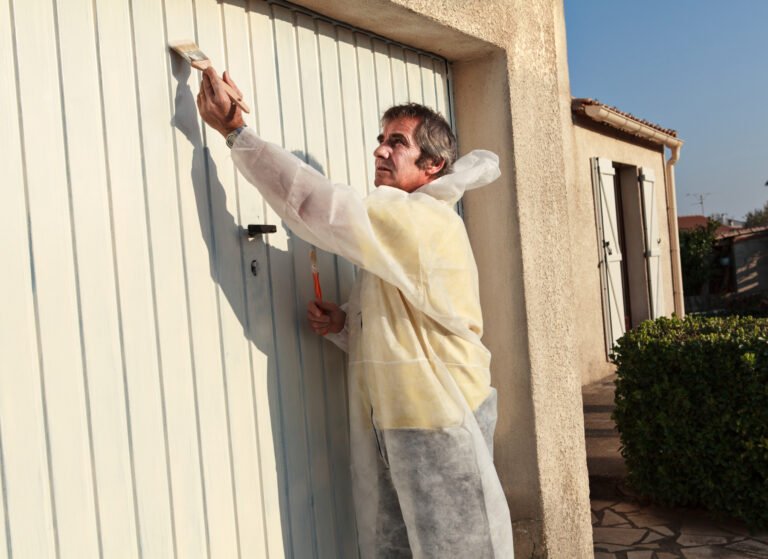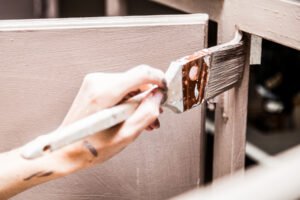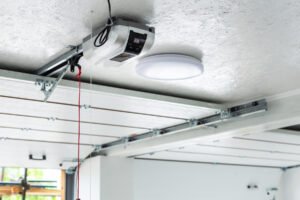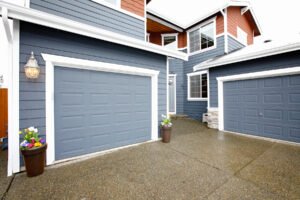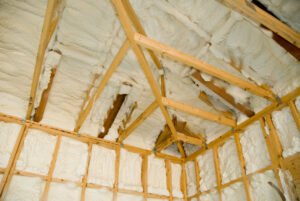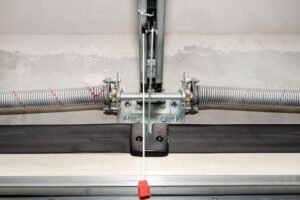Are you bothered by unruly, flaking, and unfinished garage doors? Well, garage doors are subjected to heavy sun and rain and lose their shine with time. But, since they form about 1/3rd of your facade, shouldn’t your garage doors be crisp and bold at all times?
Yes, we agree that replacing a garage door now and then is impossible, but is there any other way to upgrade your shutters and reglaze them on a budget? Can you just paint your garage doors? If yes, what paint, finishes and tools do you use? Well, take it easy! We have compiled the answers in this guide.
You can paint a garage door with acrylic, latex, or oil-based paint but the adherence and durability differ based on the garage door material. Wood, metal, and fiberglass doors are generally easy to paint, while wood composite and vinyl doors must be primed and roughened before painting.
Which Garage Doors Can You Paint Efficiently?
Garage doors are not universal and come in different colors, patterns, and grooves that affect the paint quality. Textured materials are easy to paint, while smoother screens and glass doors resist painting.
So, let’s see which types of garage doors you can paint.
1. Can You Paint a Metal Garage Door?
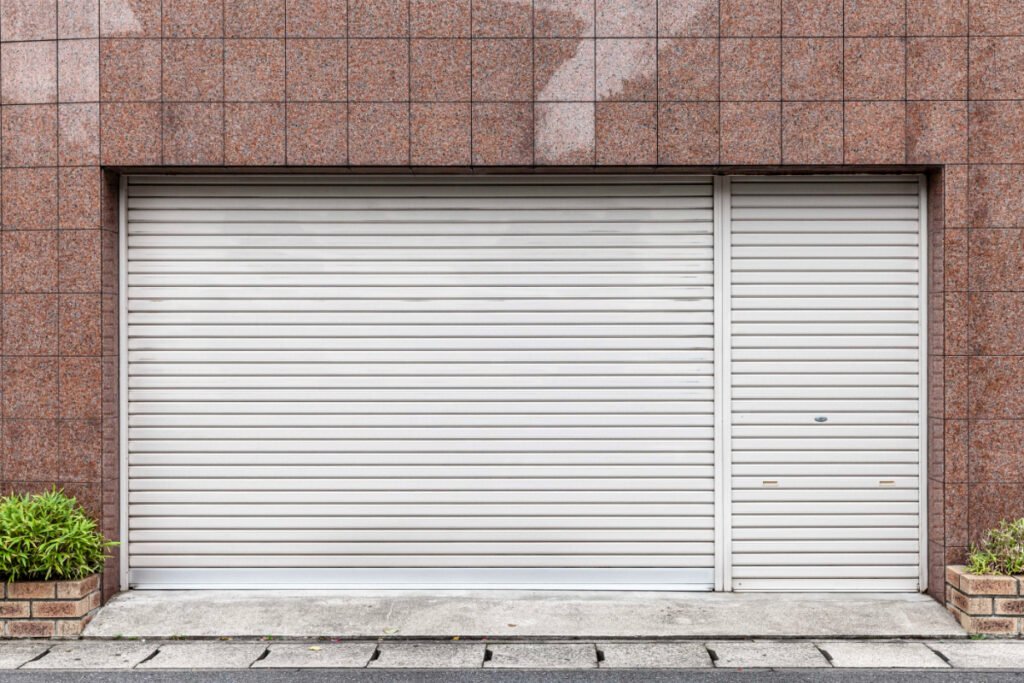
Yes, you can paint a metal door after scrubbing it with a dust sheet and sanding it with steel wool. Then, apply a thin coat of metal primer and finish it with any latex paint. You may also add a clear oil or enamel top coat to resist peeling or discoloration.
But, if you have a galvanized steel garage door, you’ll need to remove the corrosive layer with an etching primer and rinse it with vinegar or bleach before painting. Further, use a degreaser or talcum powder to dry the steel surface, strip the old paint from the shutter and apply a fresh coat of exterior latex paint.
Alternatively, if you have an alloyed metal door, it’s best to rinse it with anti-rust solutions to scrub off all the loose particles. Then, paint it with heavy-duty enamel paint and seal it off with a transparent polyurethane coating for better durability.
Never use synthetic or polyester brushes to paint metal doors as these highlight the brush marks and look coarse. Instead, use natural-fiber brushes for a smooth, shiny finish.
2. Can You Paint an Aluminum Garage Door?
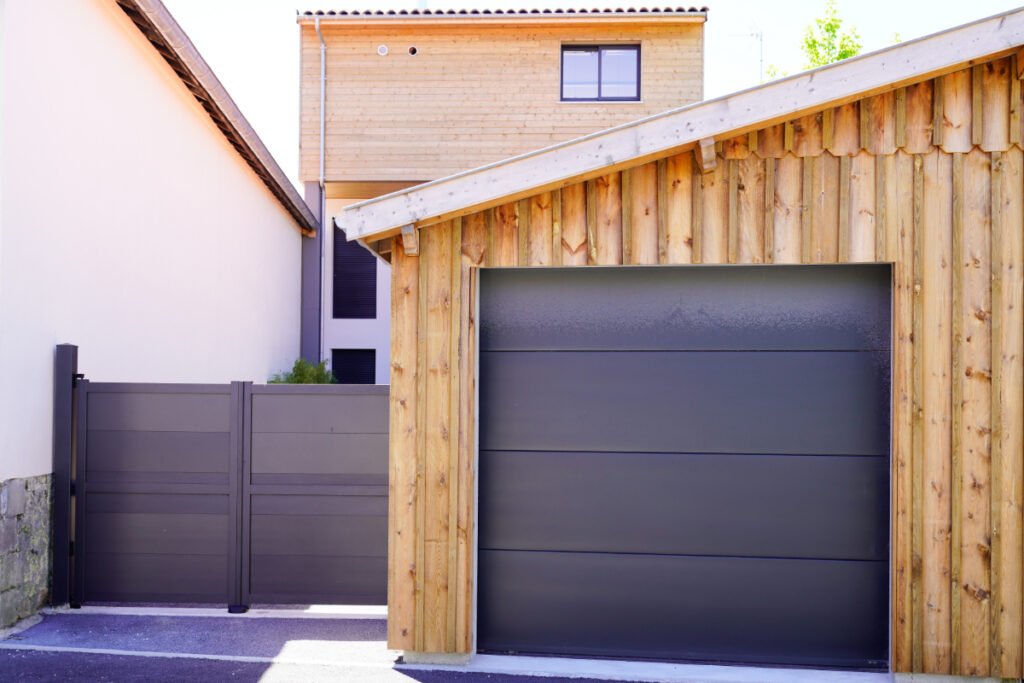
Aluminum garage doors can be easily painted with high-quality latex or acrylic paint after oil-based priming and buffing. But you must first clean all the dirt and bumps with a scrapper and fill all the existing gaps with cement filler. Then, sand it, prime it, and finish it with paint.
Aluminum doors usually absorb paint. So, you might need to apply about 6-7 thin coats to achieve the proper finish. Also, remember to use slow, up and down brush strokes for more evenness and a lump-free surface. Lastly, use good-quality nap or microfiber roller sleeves for a silky, glossy luster.
Do not use a high 150 or 170 grit sandpaper to buff aluminum doors as it might worsen the lumps and diminish the natural metal shine.
3. Can You Paint a Wooden Garage Door?
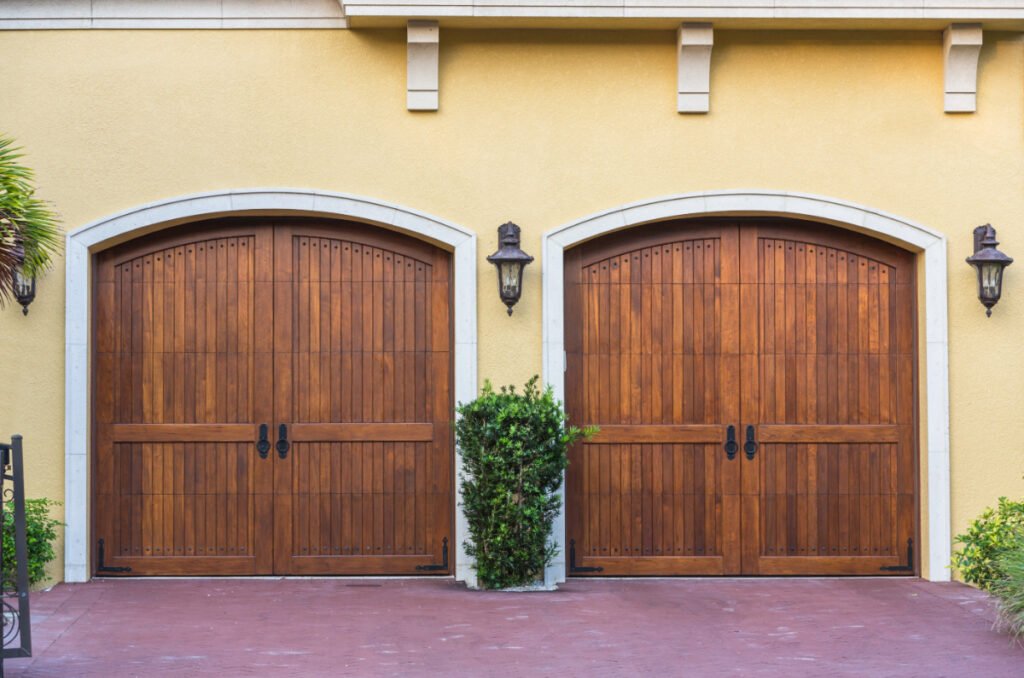
You can paint wood doors in any color and finish, but you must use different tools depending on the surface. You can use rollers or spray cans to paint flat or recessed wood doors, but soft-bristled brushes are best to paint the grooves and gaps in paneled wood doors.
However, first, you must scrub the wooden surface with a sanding filler to seal all the gaps or deformations in the wood and then prime it with latex or pigmented primer to mask its natural patterns.
Later, finish it with gloss, semi-gloss, oil, or enamel paint and use long, vertical strokes for more evenness. Lastly, add a wax or enamel top coat for protection.
Types of Wood for Easy Painting: Teak, Alder, Pine, Cedar, Birch, and Oak
Wet the floor and use a humidifier to prevent sawdust from spreading in the air and causing coarse, unlevelled door surface. Additionally, turn off all the heating and cooling equipment and let the door dry naturally for better adhesion.
4. Can You Paint Fiberglass Garage Doors?
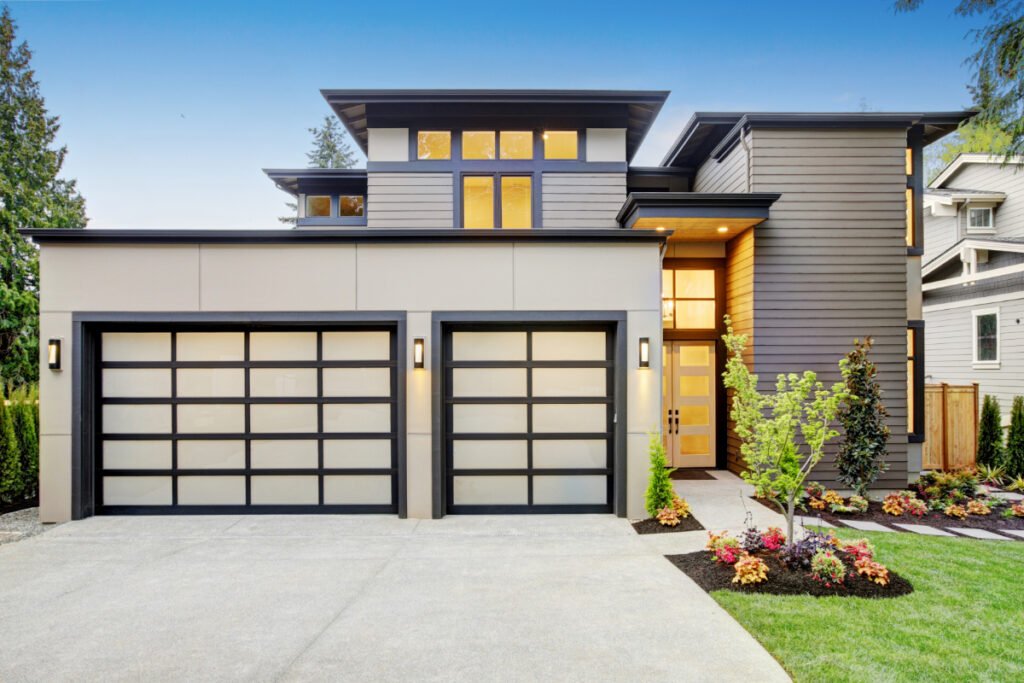
You can paint a fiberglass garage door with stiffer matte or neutral acrylic, polyester, polyurethane, or epoxy paints that don’t react with the door surface or peel off. Before painting, you must sand the surface, rinse it with spirit or acetone, and apply a primer.
Fiberglass garage doors are usually painted with angled, hard-bristled brushes that easily cover all the gaps and lumps on the surface.
But, if you have a textured or patterned fiberglass door, then it’s best to use an epoxy or polyurethane paint sprayer that doesn’t peel off with rough and continuous door use.
Never use oil or alkaline-based garage door paint to paint your fiberglass garage doors as it might react with the door’s surface, stain it and damage the finish altogether.
5. Can You Paint a Vinyl Garage Door?
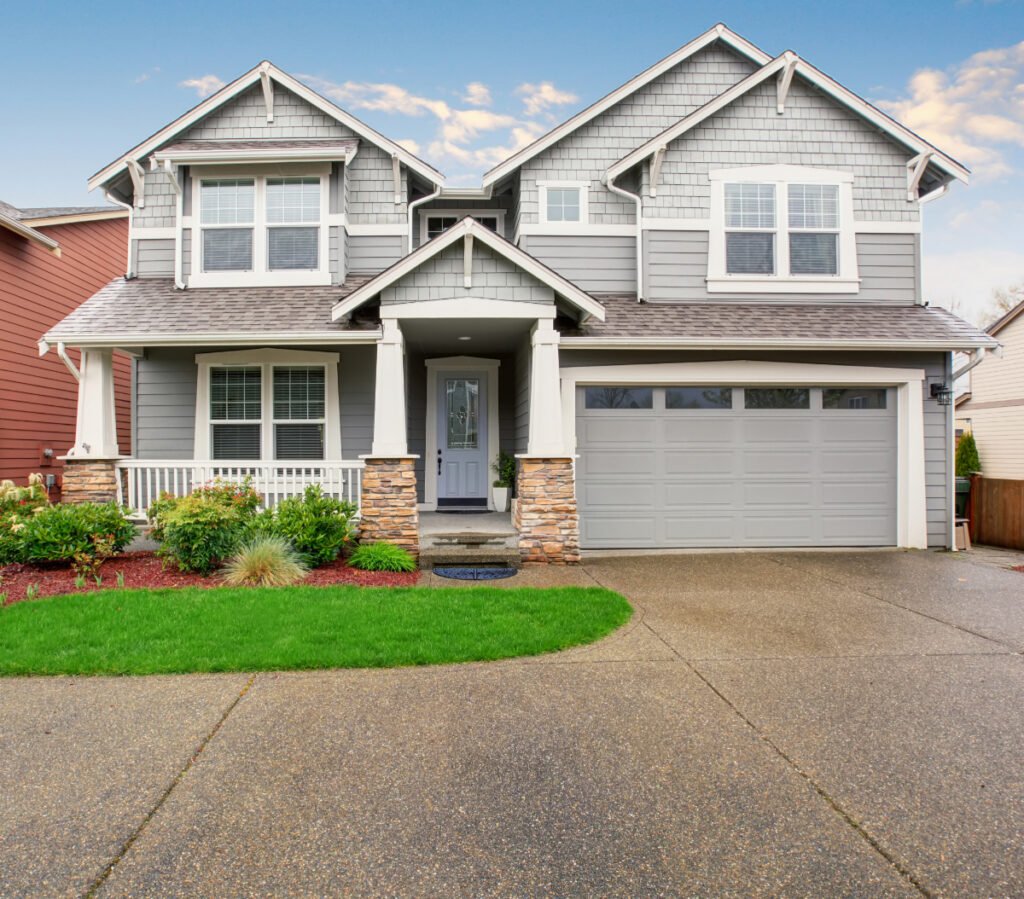
Painting vinyl garage doors is difficult, but you can use a specialized bonding primer or heavy-duty lead paint. First, you must prepare the door by dabbing it with warm water and dish soap, rinsing it with white vinegar, and priming it before painting multiple thin coats.
However, if you have a vinyl-coated steel door, mix melted plastic in the primer and add a self-etch primer for better adhesion. Then, buff the surface with high, 200-grit sandpaper, paint it with durable epoxy or lead paint, and seal it with a wax top coat. You can use a transparent epoxy finish to prevent further corrosion.
Always seal the top surface of vinyl doors with an acrylic sealant to prevent paint absorption and make the colors bold and bright.
Which Garage Doors Cannot Be Painted?
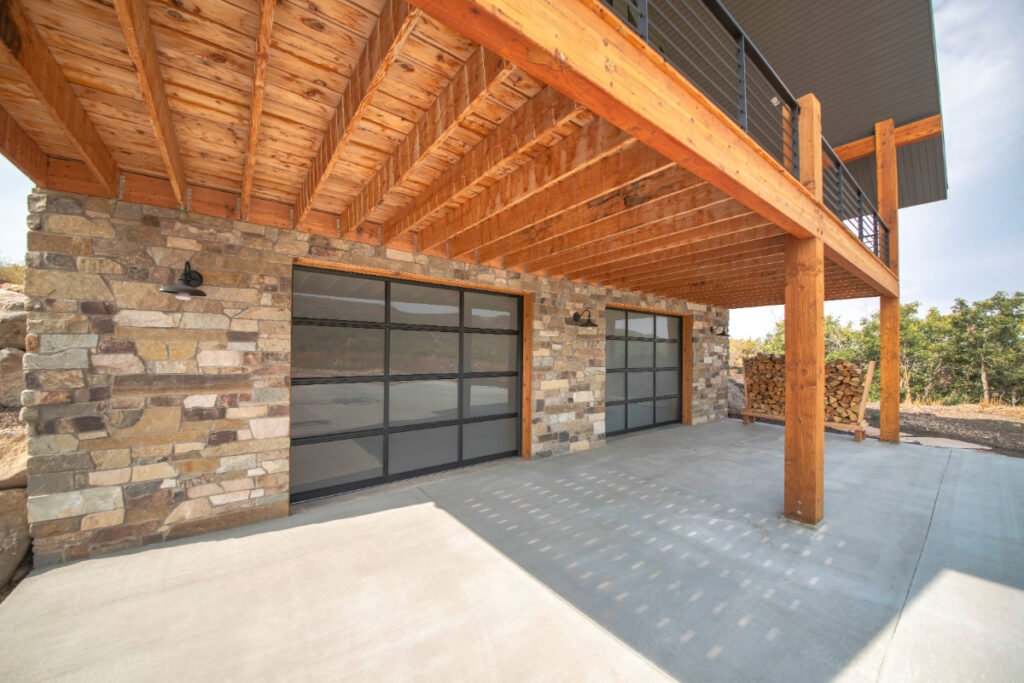
You can undoubtedly paint most garage doors by simple sanding and priming, but some materials resist paint and might peel, crack or warp the color soon.
So, let’s look at the three garage doors that cannot be painted.
- Warped or Deformed Garage Door: Warped or deformed garage doors are soggy and hold a considerable amount of moisture that prevents the paint from sticking to the surface and peels it off quickly.
- Glass Garage Door: Glass garage doors are highly smooth and have a sun-protective film that resists painting and does not give an even finish. Plus, its transparent surfaces might look crude with paint and lower your curb appeal.
- Screened Doors: Screened doors use polyester or rayon screens that are costly to paint and do not hold it for long. Instead, get them dyed from a fabric company or use translucent stains to coat them on a budget.
Which Is the Best Paint for Painting Garage Doors?
Weather-resistant latex, baked enamel, epoxy, or lead paints are ideal for painting garage doors as they do not warp or attract dust. While water-based chalk, emulsion, or distemper paints, peel off with rain and may damage the exterior door if exposed to direct sunlight.
1. Exterior Latex Paint
Latex paint is water-based paint that resists moisture and direct sunlight and provides an even, matte finish to wider, metal garage doors. It is fast drying, workable and cleanable but might chip on rough use and mold exposure.
2. Baked Enamel Paint
Enamel is a semi-gloss, smooth, self-leveling paint that adheres well to the recessions and grooves in alloyed metal or wood doors and provides a durable finish. It resists mold, mildew, and dust but is potentially flammable and might disturb the fire rating of your exterior door.
3. Acrylic Paint
Acrylic is a fast-drying polymer paint that fits onto smoother, oil-free aluminum doors and gives a plain, semi-gloss finish on drying. The paint resists discoloration, mold, and pests and is the safest, non-toxic paint if you have kids, pets, or workshop garages.
However, it becomes dark on drying and has very low workability with wood, vinyl, and fiberglass.
Acrylic stains are hard to remove on drying. Hence, always use a drop cloth or painters tape to cover your hardware until you finish your paint job.
4. Oil Based Paint
Oil paint is slow-drying, glossy paint that enhances the natural shine of wooden garage doors and retains their grainy texture on drying. These look rich and finished but might darken or turn yellow with age.
Similarly, they are vulnerable to fungal growth and need a top sealer or bonding agent to last longer.
5. Epoxy Paint
Epoxy is a commercial, heavy-duty paint that sticks onto shinier fiberglass or composite doors and exudes a smooth, matte finish that simultaneously resists rust, corrosion, and fungus. It is highly durable but might warp due to heavy moisture and doesn’t suit humid environments. Plus, it emits toxic fumes and might cause suffocation.
Which is the Best Paint Finish for Your Garage Door?
High gloss or semi-gloss finishes are the best for garage doors as they repel dust and pests and effectively withstand extreme weather, scratches, and mildew. In contrast, satin finishes help hide imperfections and bumps and might suit textured materials like wood and metal.
- Flat or Matte: Matte finishes are plain, muted, and minimize the shine and reflectivity of your garage doors. Thus, they suit traditional wooden doors and help hide scratches and bumps efficiently. But, they might peel off with excess moisture and sunlight. Hence, don’t forget to top these with a resin coat.
- Satin: Satin finishes are a balance of gloss and matte texture and help hide blemishes, rust, or warped surfaces effectively. And they even withstand extreme weather conditions and eliminate dust and mildew effectively. However, these are porous and might discolor with time.
- Semi-gloss: Semi-gloss finishes have a bright, slightly glossy appearance with a modern and minimal feel and smooth brush strokes. These finishes protect from water, corrosion, and weathering and have high UV reflectivity that prevents discoloration. However, it doesn’t hide imperfections and cannot be cleaned.
- High-gloss: High gloss finishes are shiny, high-reflective finishes that resist abrasion and add a contemporary feel to everyday doors. They are water, moisture, and fungus resistant but highlight the surface uniformities and might peel off with time.
Which is the Best Spray Paint for Garage Doors?
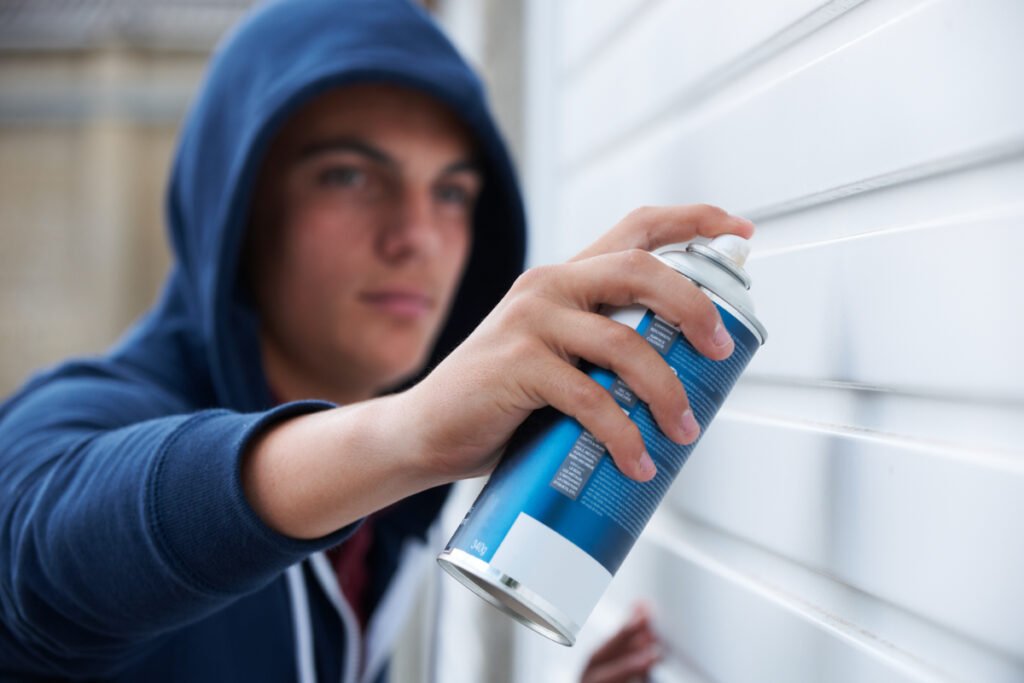
Dulux aerosols, epoxy, polyurethane, and 2k enamel spray painting cans are the best for metal, vinyl, wood, and fiberglass garage doors. In contrast, aluminum doors are tricky to spray paint and work only with good primer sprays that bind to the surface and don’t rust.
On the other hand, emulsion, lacquer, chalk, or cement sprays are not that weather resistant and might chip, peel or warp during exterior painting. So, you should limit them to spray painting your garage door trims, opener arms, or garage ceiling insulation batts.
How to Paint Garage Doors Efficiently?
Garage doors are undoubtedly effortless to paint and take about 4-5 hours for the whole paint job to complete. So, just arm yourself with your paint brushes, rollers, or spray cans and follow the steps below to have a refinished garage door in no time!
Tools you’ll need:
- Rubber gloves
- Dust mask
- Safety goggles
- Wire brush
- Painter’s tape
- Drop cloth
- Brushes or Cans
Materials you’ll need:
- Exterior grade primer
- Cement putty for any exterior or interior painting
- Suitable paint
- Commercial-grade, top sealer
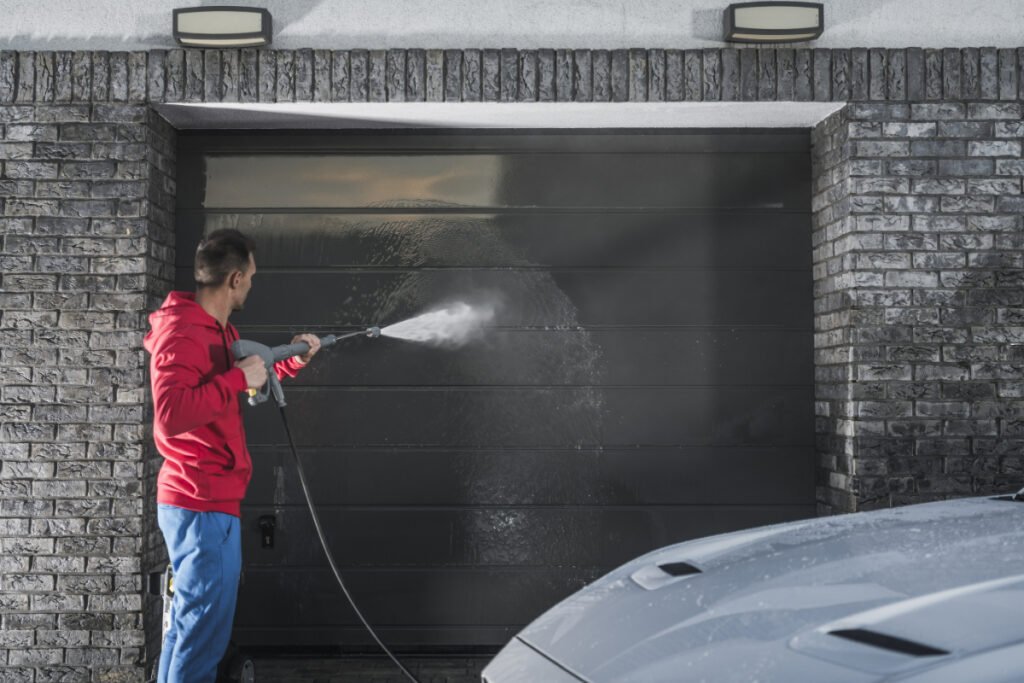
Step 1: Use dish soap and sponges to remove all the dirt and grime from the door’s surface and rinse it with warm water.
Step 2: Lay a protective drop cloth and cover all the hardware and garage door openers with painters tape.
Step 3: Sand the door with coarse sandpaper and prime it using a flat, hard-bristled brush. Let it dry for a couple of hours, and buff it lightly.
Step 4: Use a hand-held brush and paint your door corners, widths, and areas around the garage door hinges. Later, use a roller to paint the panels quickly or spray paint them using a paint sprayer. Let it dry for 2-3 hours, and then apply a second coat.
Step 5: Finally, allow the paint to air dry for 8 – 10 hours, scrape off all the loose paint, and then seal it with a commercial wax sealer or resin to help it last longer.
Tips For Painting Your Garage Doors:
- Paint jobs can be really messy. So, clear your vehicles and storage from the garage, and use a drop cloth to prevent unnecessary stains.
- Use left to right strokes when spray painting garage doors, but paint them in top and bottom strokes when using a paintbrush for an even finish.
- Use multiple, thin coats instead of a single, thick coat for more durability.
- Leave the garage door open to boost its air drying speed and allow even drying from all sides.
- Use matte or glossy sealer finishes as per your preference and facade style, but don’t forget to add a polyurethane top coat to help resist heat.
How Often Should You Paint Your Garage Door?
Garage door paint usually lasts about 7-8 years before it starts to peel, warp or discolor. However, you might need to repaint it every 3-4 years if you live in rainy or snowy regions that are prone to warping.
How Much Paint Do I Need for My Garage Door?
You’ll need approximately 0.5 liters of paint for single-door garages and about 1 – 1.25 liters for double or triple-door garages. But, if you have odd-sized shutters or panels, you’ll need to calculate the quantity of paint using the simple formula “ Liters of paint = Height of the door / 16” to get the exact amount.
Which Is the Easiest Garage Door to Paint?
Wooden garage doors are usually the easiest to paint since they already have a coarse surface that adheres well to oil-based and water-based paints. Additionally, you can even easily paint metal and aluminum doors with a bit of sanding and priming.
How Much Does It Cost to Paint a Garage Door?
Garage doors usually cost about $2 – 4 per square foot, depending on the material and type of paint. Thus, it would cost you about $400 to paint a double car garage and about $650-700 for a triple car garage.
Garage door painting is a smart and effective way to remodel faded, damaged shutters and boost the curb appeal on a budget. While some materials like wood and metal are easier to paint, vinyl doors are pretty challenging. You can also use a variety of finishes to suit your facade style and catch the eye on the street!
Further, this guide has listed the tips, tricks, and steps to follow. So, just pick a suitable paint, get those rollers and start upgrading your garage door right away. And, don’t forget to add the right garage door insulation to protect the paint from harmful weather and to keep your garage warm!

